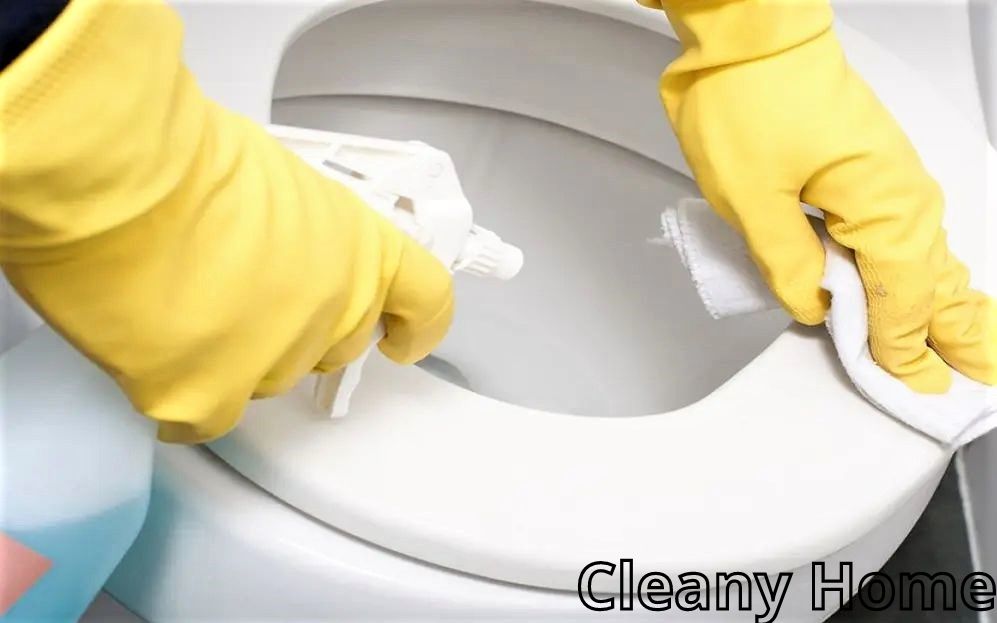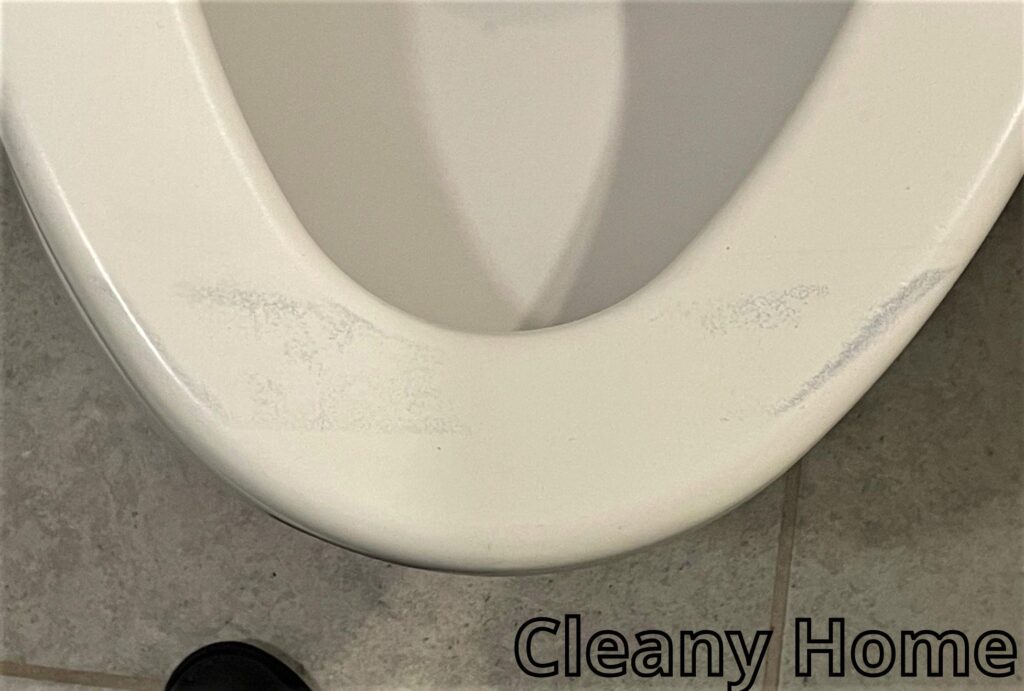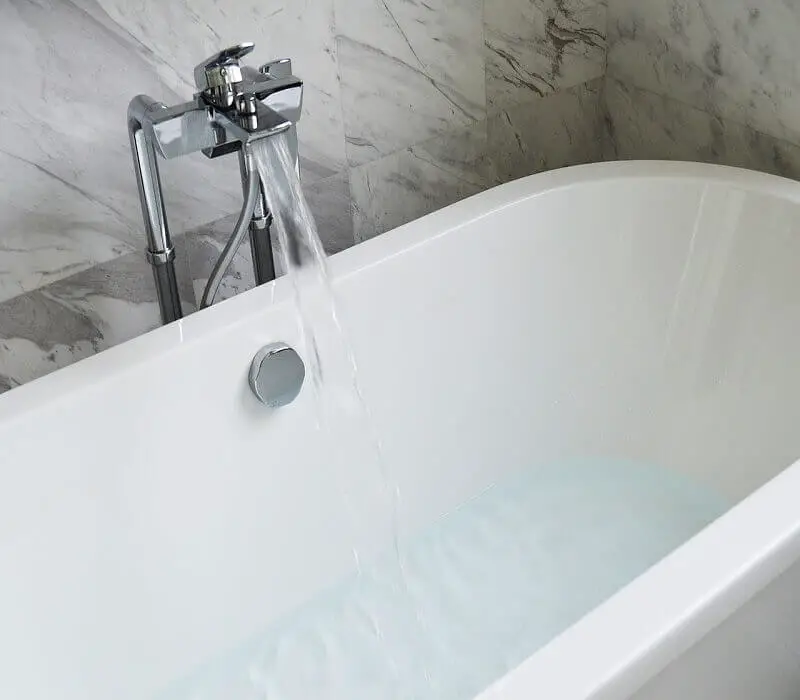Discovering black soot or residue on your toilet seat can be both puzzling and concerning. You may wonder where it’s coming from and how to get rid of it effectively. While it might seem like an unusual occurrence, there are several common reasons why this black residue appears, ranging from simple to more complex issues. Understanding these causes can help you address the problem promptly and maintain a clean, hygienic bathroom environment. Now we will discuss the problem wirh black residue on toilet seat.

How To Tell The Difference Between Mold And Mineral Deposits
Distinguishing between mold and mineral deposits can be crucial in effectively addressing and remedying the issue of black residue in toilets. While both may appear as black spots or streaks, there are distinct characteristics that can help differentiate between the two:
Texture and Appearance
- Mold. Mold typically has a fuzzy or slimy texture and tends to grow in patches or clusters. It may appear black, green, or even pinkish in color, depending on the type of mold.
- Mineral Deposits. Mineral deposits, such as those from hard water, often have a hard, crusty texture. They may form as a result of water evaporation, leaving behind a residue that can appear as black stains or streaks.
Location and Spread
- Mold. Mold tends to grow in areas with high humidity and moisture, such as around toilet bowls, under the rim, or on surfaces that are frequently wet. It can spread rapidly if not addressed promptly.
- Mineral Deposits. Mineral deposits are more likely to form in areas where hard water comes into contact with surfaces, such as inside the toilet bowl or on the toilet seat. They may appear in specific spots and gradually accumulate over time.
Response to Cleaning
- Mold. Mold can often be removed with relative ease using common household cleaners or natural remedies like vinegar or hydrogen peroxide. However, if the mold infestation is severe or has penetrated porous surfaces, professional remediation may be necessary.
- Mineral Deposits. Mineral deposits typically require cleaners specifically formulated to dissolve minerals, such as limescale removers or acidic solutions. Stubborn mineral deposits may require more intensive cleaning methods or mechanical removal using tools like a pumice stone.
Odor
- Mold. Mold growth is often accompanied by a musty or earthy odor, particularly in poorly ventilated areas. This odor can be a telltale sign of mold presence.
- Mineral Deposits: Mineral deposits typically do not emit any distinct odor unless they have trapped organic matter or bacteria, which could produce an unpleasant smell.
Reaction to Moisture
- Mold. Mold thrives in moist environments and may become more pronounced or spread rapidly when exposed to moisture.
- Mineral Deposits. Mineral deposits may remain relatively unchanged when exposed to moisture, although they can become more noticeable as water evaporates, leaving behind mineral residue.
By considering these factors and closely examining the characteristics of the black residue in your toilet, you can better determine whether it is mold or mineral deposits. Identifying the underlying cause accurately is essential for implementing the appropriate cleaning and remediation measures to restore cleanliness and prevent further buildup. If in doubt, seeking professional assistance or testing can provide clarification and guidance on how best to address the issue.
What Causes Black Residue On Toilet Seat
1. Mold and Mildew Growth. One of the primary reasons for black residue on toilet seats is the growth of mold and mildew. Bathrooms provide the ideal environment for mold and mildew to thrive due to high humidity levels and moisture. When left unchecked, these fungal organisms can accumulate on various surfaces, including toilet seats, and appear as black spots or streaks.
To prevent mold and mildew growth, it’s essential to maintain proper ventilation in your bathroom by using exhaust fans or opening windows to reduce humidity levels. Regular cleaning with mold-killing products or natural remedies like vinegar or hydrogen peroxide can also help inhibit their growth. Additionally, promptly fixing any leaks or drips around the toilet can prevent excess moisture buildup, which contributes to mold and mildew proliferation.

2. Mineral Deposits. Another common culprit behind black residue on toilet seats is mineral deposits, particularly if you have hard water. Hard water contains high concentrations of minerals like calcium and magnesium, which can accumulate on surfaces over time, forming unsightly black stains or residue.
To address mineral deposits, consider using commercial cleaners specifically formulated to dissolve limescale and mineral buildup. Products containing citric acid or vinegar are effective at breaking down these deposits without causing damage to the toilet surface. Regular cleaning and periodic descaling of your toilet bowl can help prevent the formation of black residue caused by mineral deposits.
3. Toilet Bowl Stains. Over time, toilet bowl stains caused by various factors such as hard water, minerals, or organic matter can transfer onto the toilet seat, leaving behind black residue. These stains may result from inadequate cleaning, improper use of cleaning products, or the presence of certain substances in the water supply.
To combat toilet bowl stains, thorough cleaning with a toilet bowl cleaner or a mixture of baking soda and vinegar can help remove stubborn residue and restore the toilet’s cleanliness. Additionally, using a toilet bowl brush with stiff bristles can effectively scrub away stains without scratching the surface. For persistent stains, consider using a pumice stone or a commercial stain remover designed for toilets, following the manufacturer’s instructions carefully.
Read also:
- How to Remove Harpic Stains from Toilet Seat In Less Than 5 Minutes
- How to Remove Fake Tan from a Toilet Seat [4 Tips That Work Like a Charm]
- How to Remove Orange Mold in Shower and Bathroom
How To Remove Black Residue On Toilet Seat. 3 Best Methods
- Use Bleach. Create a solution of water and bleach (1 part bleach to 10 parts water) and apply it to the black residue. Let it sit for a few minutes, then scrub with a toilet brush or sponge. Rinse thoroughly with water.
- Try Lemon Juice and Salt. Mix lemon juice with salt to create a paste. Apply the paste to the black residue and let it sit for about 15-20 minutes. Then, scrub the area with a brush or sponge and rinse with water.
- Use a Magic Eraser. Magic Erasers, or similar melamine foam cleaning pads, can be effective for removing tough stains. Wet the Magic Eraser and gently scrub the black residue until it lifts away. Rinse the area thoroughly afterward.
Remember to always wear gloves and ensure proper ventilation when using cleaning agents like bleach. Additionally, test any cleaning solution on a small, inconspicuous area of the toilet seat first to ensure it doesn’t cause damage.

How To Prevent Black Residue On Toilet Seat
Preventing black residue on a toilet seat involves a combination of regular cleaning, proper maintenance, and implementing preventive measures. Here are some effective strategies to help keep your toilet seat clean and free from black residue:
- Frequent Cleaning. Regular cleaning is essential for preventing the buildup of black residue on the toilet seat. Wipe down the seat with a mild detergent or disinfectant after each use to remove any surface contaminants, including bacteria, oils, and debris.
- Proper Ventilation. Maintain good ventilation in your bathroom to reduce moisture levels and inhibit the growth of mold and mildew. Use exhaust fans or open windows during and after showering or bathing to allow humid air to escape, preventing condensation from accumulating on surfaces.
- Prompt Repairs. Address any leaks or plumbing issues promptly to prevent excess moisture from accumulating around the toilet. Check for leaks in the toilet tank, supply lines, and seals regularly and repair them as soon as they are detected to prevent water damage and mold growth.
- Use of Toilet Bowl Cleaners. Regularly clean the toilet bowl with a suitable cleaner to prevent the buildup of mineral deposits and stains, which can transfer onto the toilet seat. Choose a cleaner specifically formulated to dissolve limescale and mineral buildup, and use it according to the manufacturer’s instructions.
- Avoid Harsh Chemicals. Be cautious when using harsh cleaning chemicals, as they can damage the finish of the toilet seat and contribute to material breakdown. Opt for mild detergents or natural cleaning solutions like vinegar or baking soda to clean the seat effectively without causing damage.
- Proper Use of Toilet Brushes. Use a toilet brush with soft or medium bristles to clean the toilet bowl and seat. Avoid using abrasive materials or harsh scrubbing techniques, as they can scratch the surface of the seat and create areas where bacteria and residue can accumulate.
- Regular Inspections. Periodically inspect the toilet seat for signs of wear, damage, or discoloration. If you notice any black residue or deterioration, address the issue promptly by cleaning or replacing the seat as needed to prevent further buildup and maintain hygiene.
- Educate Household Members. Encourage proper toilet hygiene practices among household members to minimize the spread of bacteria and contaminants. Remind them to clean the toilet seat regularly and to avoid leaving wet towels or clothing on the seat, which can contribute to mold growth and residue buildup.
By following these preventive measures and incorporating them into your regular cleaning routine, you can effectively prevent black residue from accumulating on your toilet seat and maintain a clean, hygienic bathroom environment.
Conclusion
In conclusion, black residue on toilet seats can stem from various factors, including mold and mildew growth, mineral deposits, and toilet bowl stains. By understanding these common causes and implementing appropriate cleaning and maintenance practices, you can keep your toilet clean and free of unsightly black residue. Regular cleaning, proper ventilation, and addressing any underlying issues contributing to the problem are key steps in maintaining a hygienic bathroom environment.
Why is there black on my toilet seat?
Black spots on a toilet seat could be due to mold, mildew, or mineral deposits from water. Regular cleaning and maintenance can help prevent this.
What causes black soot on plastic?
Black soot on plastic can be caused by incomplete combustion of fuel, particularly in environments with poor ventilation.
We're an affiliate
We hope you love the products we recommend! Just so you know, CleanyHome.com is a participant in the Amazon Services LLC Associates Program, an affiliate advertising program designed to provide a means for sites to earn advertising fees by linking to Amazon.com.


